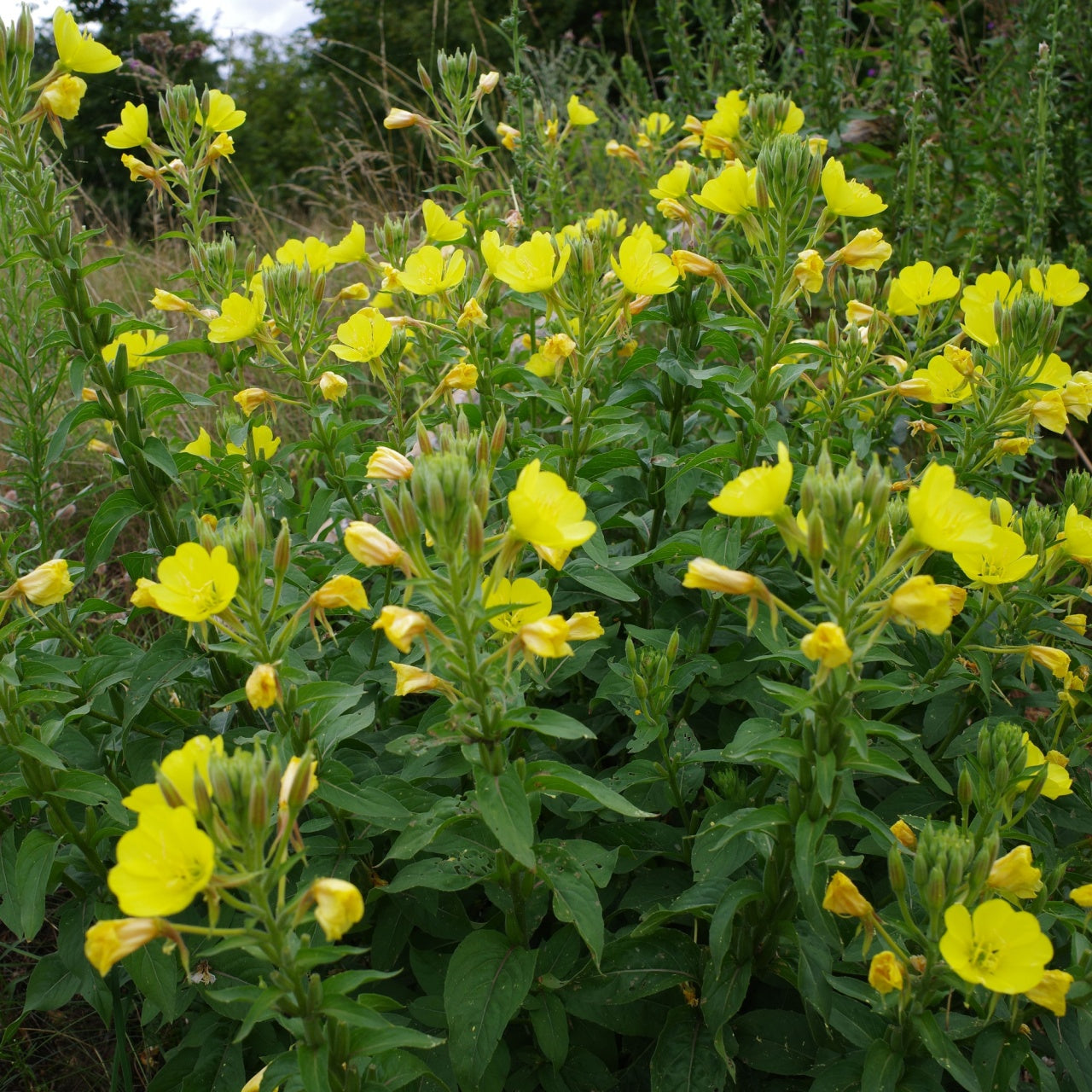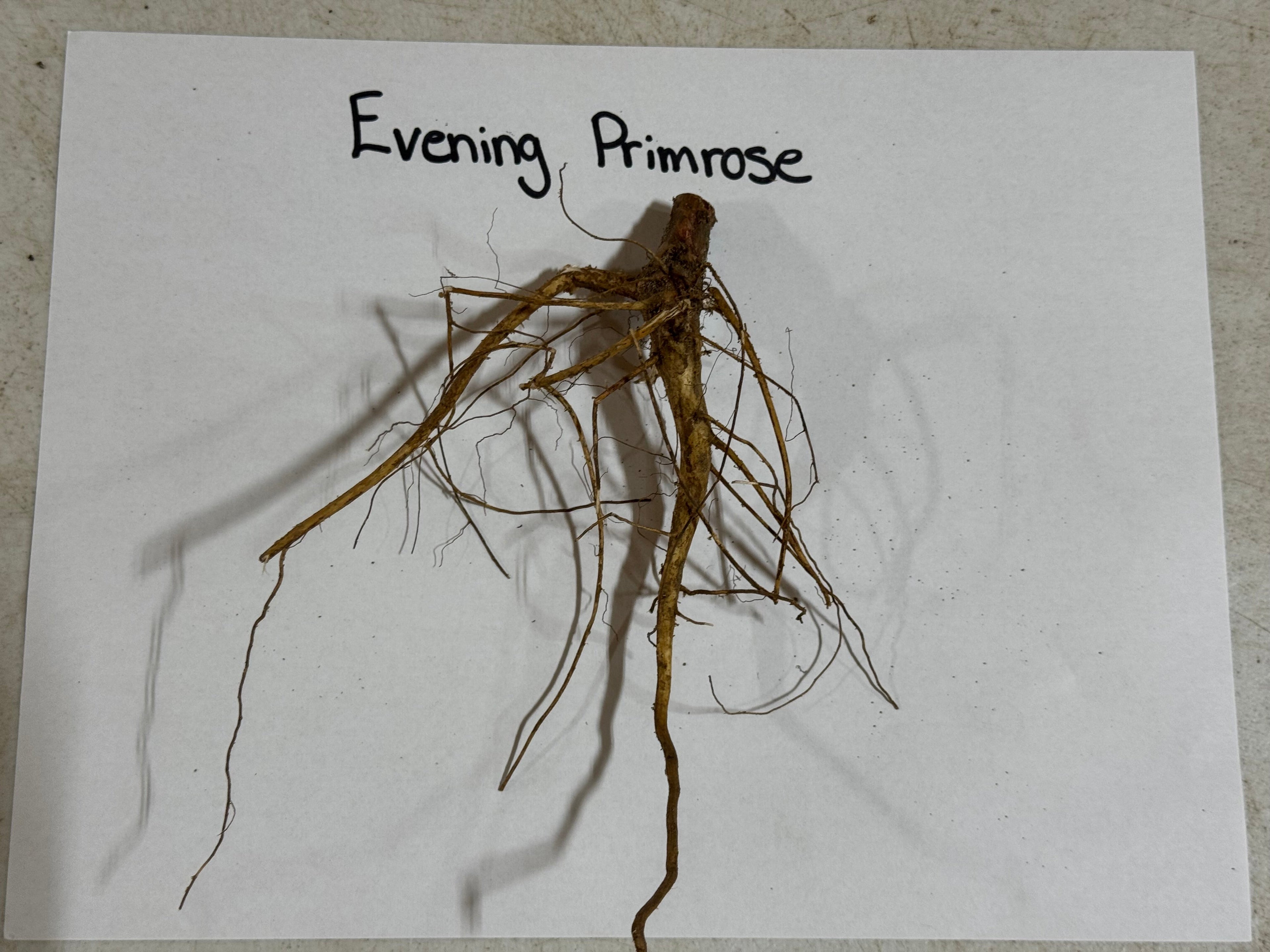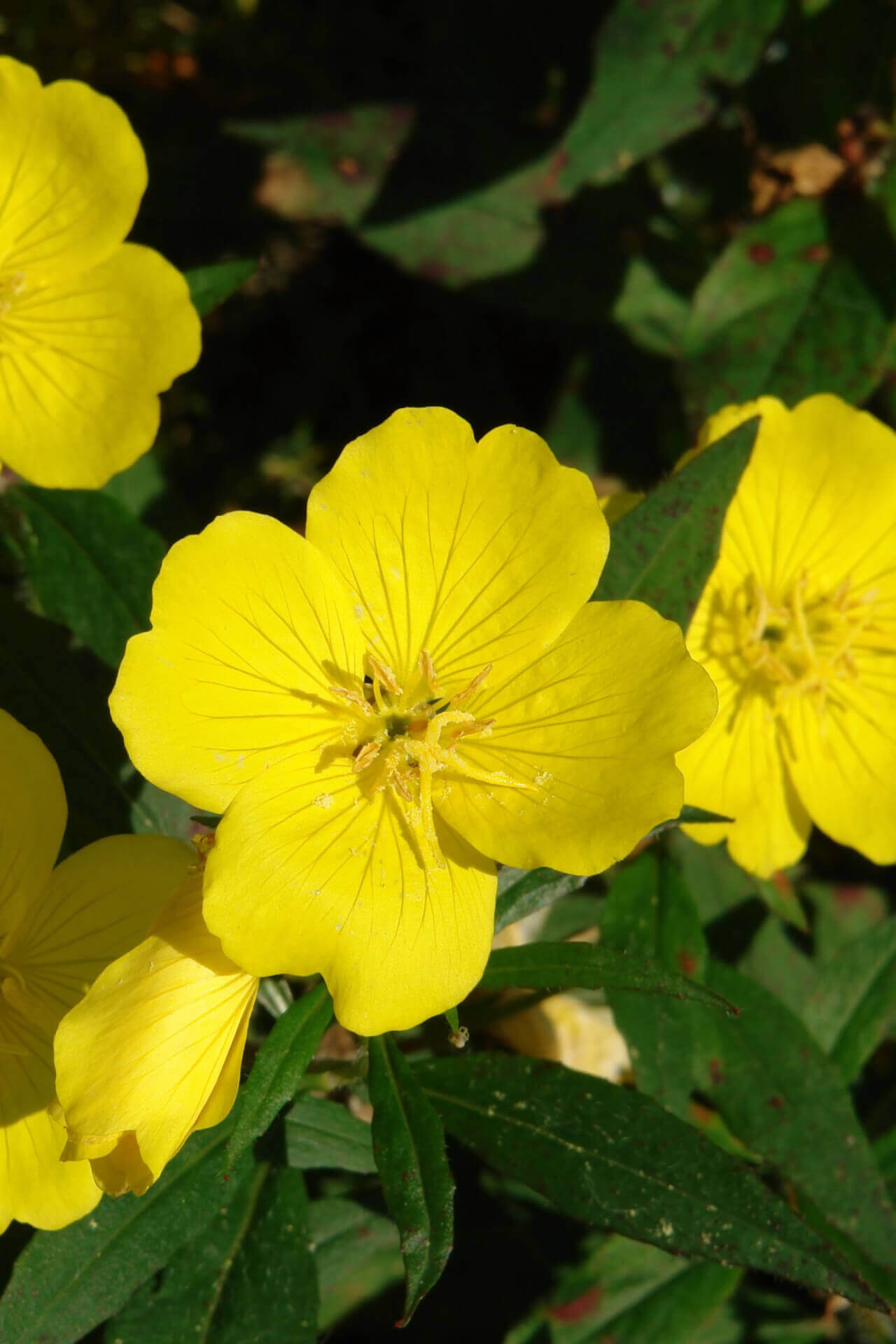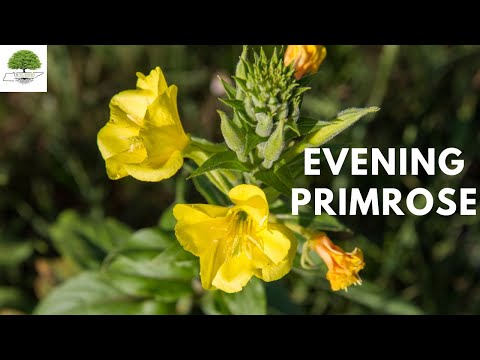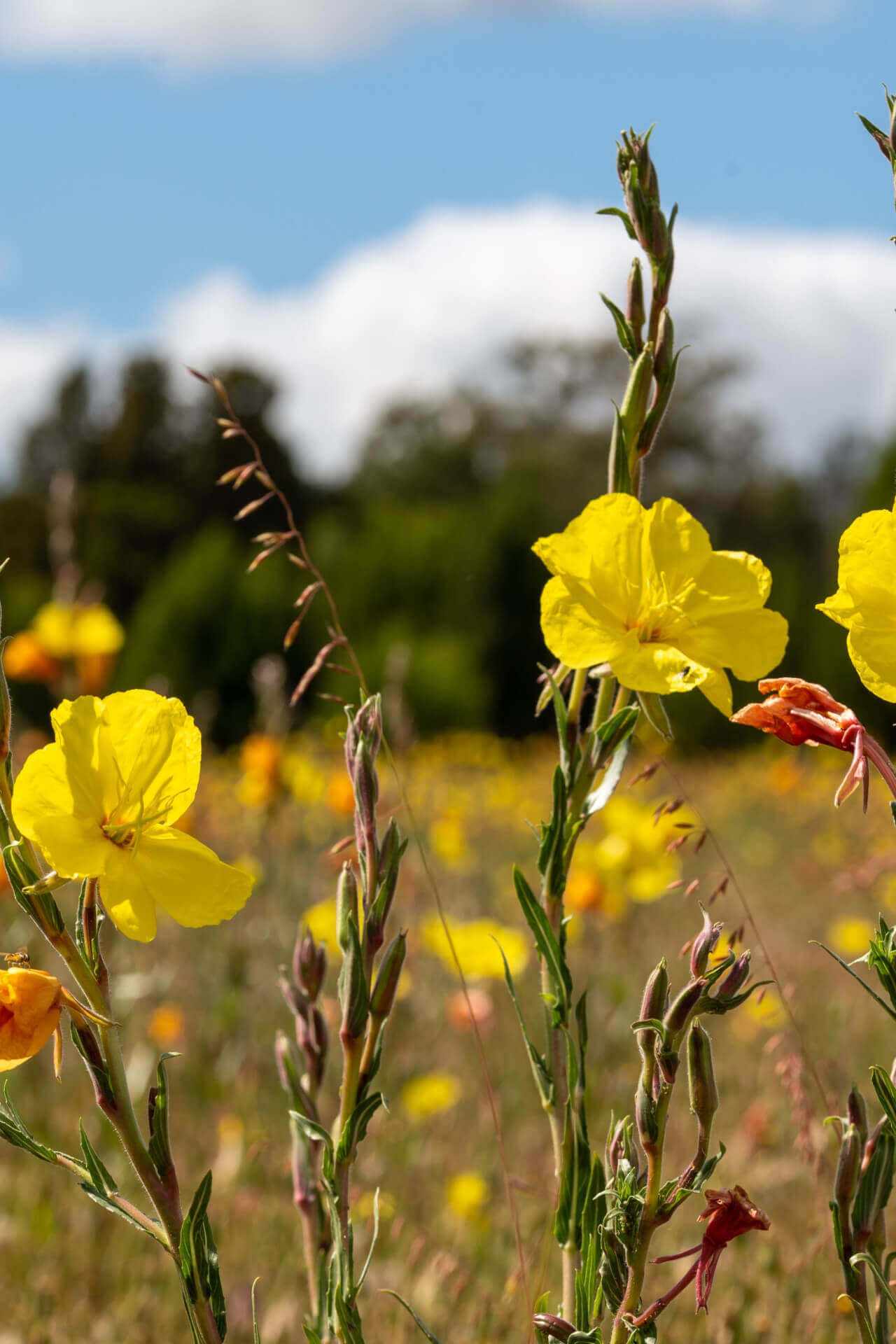Evening Primrose (Oenothera biennis) For Sale
The Common Evening Primrose is a unique beauty perennial that blooms as the sun sets, which is how it got its name. The petals visibly open in the evening and close with the sunrise, creating a strange phenomenon that is special to witness. A native of eastern and central North America, this flower can be found in multiple shades of pink, yellow, and white that seem to glow under the moonlight.
Evening Primrose Plant Details
Family: Onagraceae
Light Requirement: Full sun, Partial shade
Water Needs: Moderate
Height: 6-12 in
Spread: 12-18 in
Growth Rate: Moderate
Soil Preference: Rocky or sandy
Bloom Time: Late spring - late summer
Wildlife Value: Pollinators, Moths, Butterflies, Bees
Notable Characteristics
The Evening Primrose flower can be found in woodlands, prairies, and disturbed anthropogenic sites. It has a basal rosette of leaves that continue up its thick, hairy stem. Long, narrow leaves decrease in size towards the top of the stem, which can grow to be up to six feet tall under the right conditions. Its flowers bloom in a cone shape at the top of the stem. Bees, butterflies, and many other pollinators are attracted to the light lemon scent of the fragrant flowers.
Landscape and Maintenance
A nectar guide pattern is visible for bees and other pollinators, which helps guide them to the nectar source and encourages pollination. The pattern is printed on the leaves but is invisible to the naked eye, except under UV light. Nocturnal moths pollinate this night-owl flower and bees and other insects in the early morning.
The Evening Primrose is also a host plant for the Primrose Moth and the White-lined Sphinx Moth. The moths are known to lay their eggs on the flower buds, and later, the resulting caterpillars eat the plants’ leaves. This life-cycle support is an important addition to the wildlife community of a native habitat. This moonlit flower is an exciting addition to your garden because of its wildlife value and unique evening blooms. Plant it to increase visual interest and beauty in your garden all day and night!
Exposure
Evening Primrose flourishes in total sun to part shade. It prefers at least 6 hours of direct sunlight daily for optimal growth and flowering. In areas with partial shade, ensure it receives morning sun for the best results.
Height at Maturity
Over 12"
Usage
Pollinator Plant
Shipped As
Bare-root
Ships
USPS
Planting Zones
4-9
